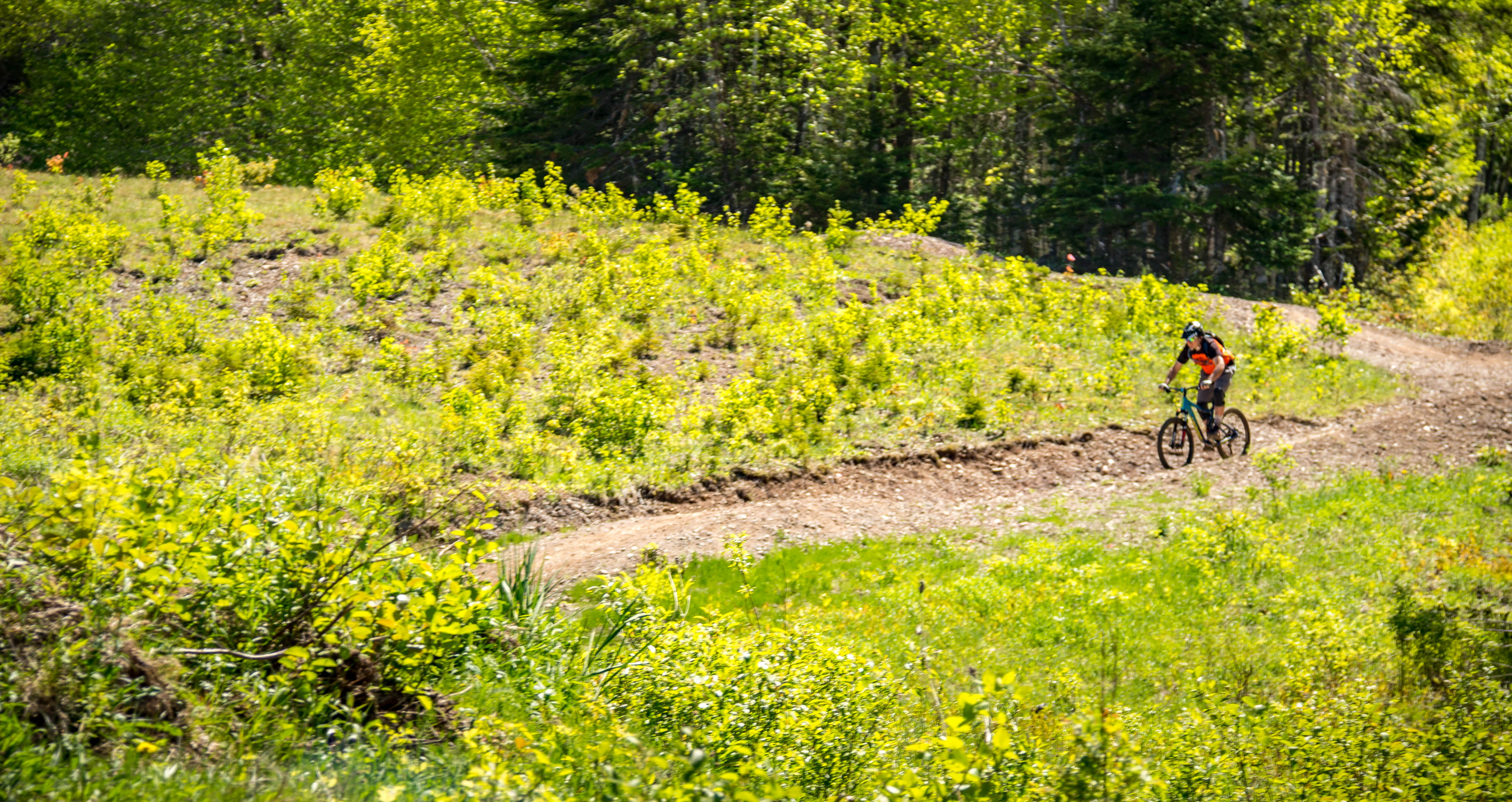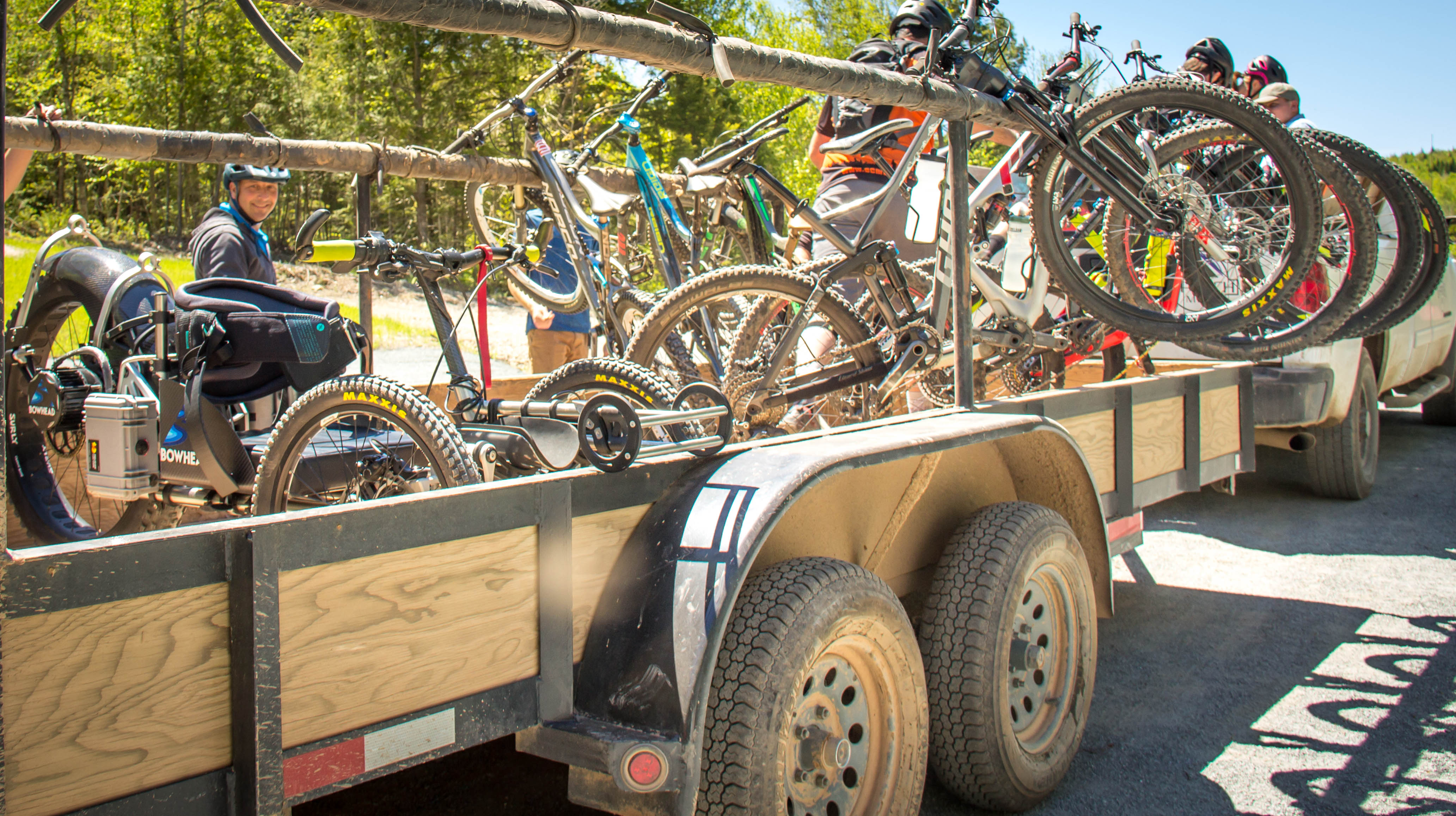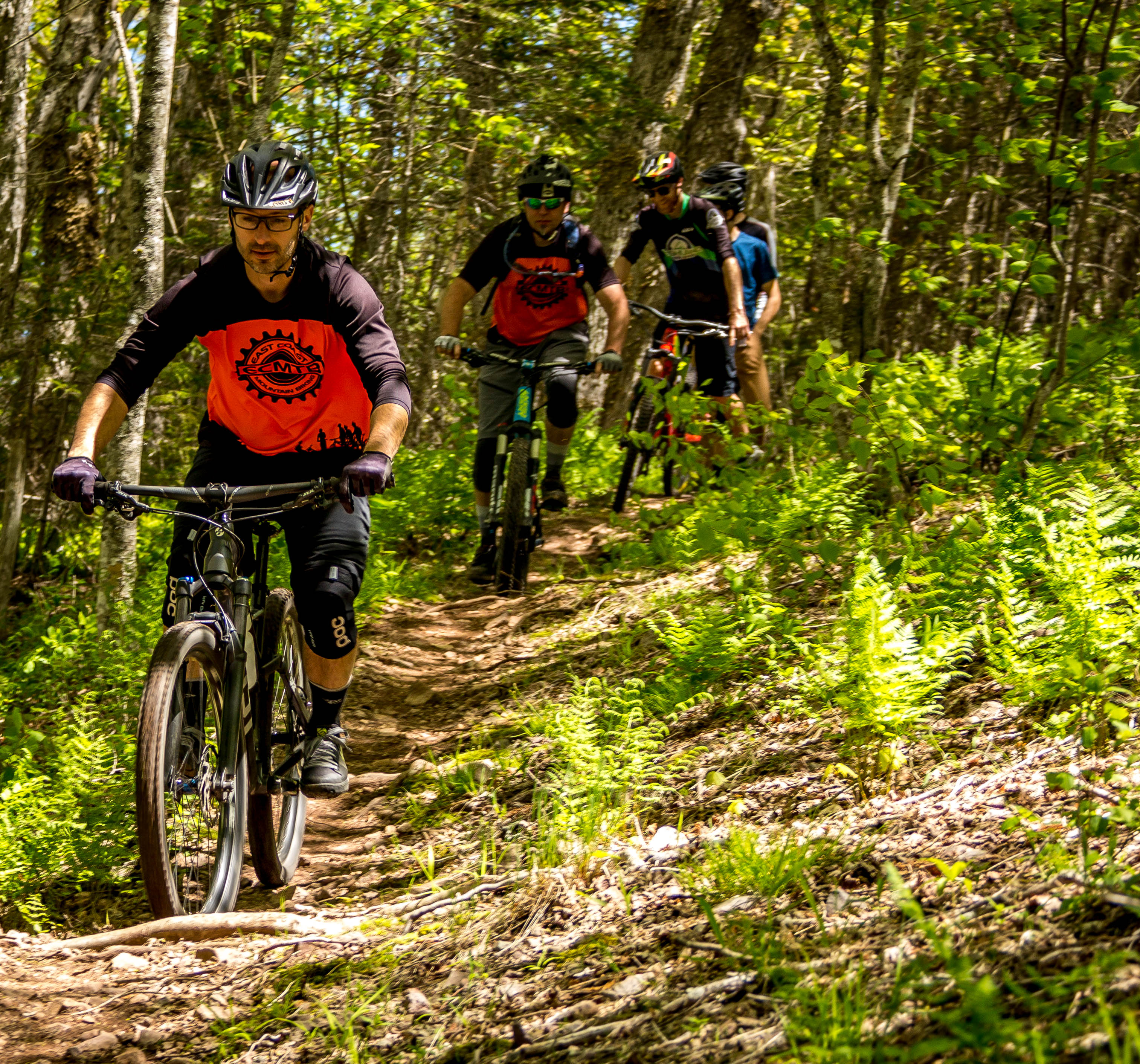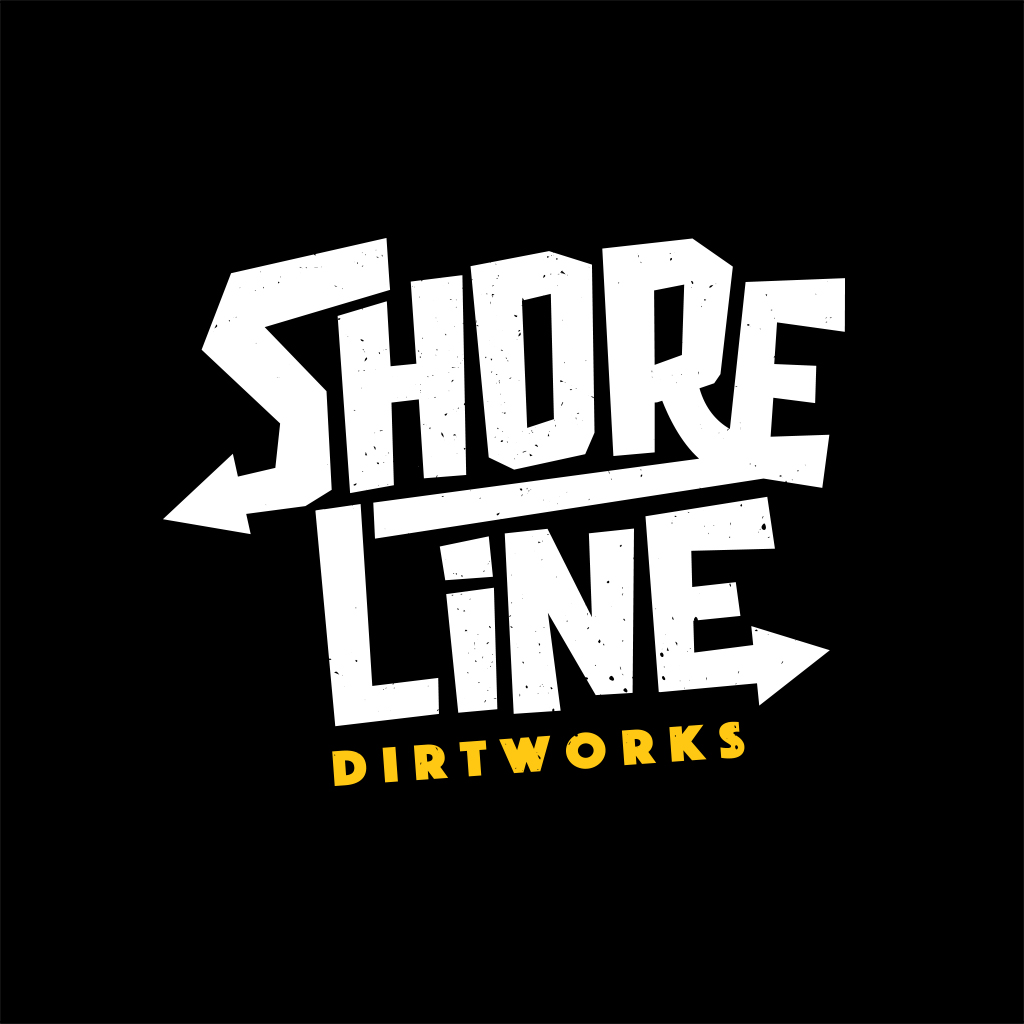Often when we talk about building mountain bike trails or pump tracks, we talk about how much fun people can have riding them. We talk about the qualitative benefits of a tourism and community strategy that involves cycling infrastructure but we often understate the quantitative benefits. While it’s true that mountain bike trails and pump tracks can be a lot of fun, there’s a lot more to it than that. These tracks and trails can be part of a broader strategy.
First, there is the economic impact when a community uses these trails and parks in their strategic planning. Second, there are the obvious and not so obvious health benefits that are realized through this plan. Third are the ways in which athletes can learn and grow using these facilities. Finally, these mountain bike trails and pump tracks create a sense of belonging and ownership, dramatically improving the quality of life in the community. All of these factors come together in a very obvious conclusion; building mountain bike trails and pump tracks are the right things for communities to do.
For most communities, a pump track or mountain bike trail looks like an expenditure in the budget. Obviously it costs money to build these facilities, especially if you choose to do it right. However, a well-designed, purposefully planned bike facility is not an expenditure. It is an investment. Consider the community of Squamish, B.C.
Bike Tourism Revenue in Squamish, British Columbia
2006
2016
In 2006, studies determined that riders spent roughly $2.6 million in Squamish. Fast forward 10 years and that number has risen to $9.9 million. In 2016 Squamish boasted roughly 25,000 riders which is an incredible data point for a town with a population of 19,612. 80% of those riders came from outside Squamish. This means that there are a large number of people that travel to Squamish each year because of the incredible mountain biking opportunities. Just as important is who these people are.
In 2016, Squamish generated $9.9 million in bike tourism revenue with a population of less than 20,000
Bike tourism is an industry that attracts wealthy and generous tourists. They are typically older, in their late 40s or early 50s, are university educated, and make roughly $75k per year. These people have the means to travel the world and invest in the communities that invest in bringing them there. The quadrupling in revenue in mountain bike tourism in Squamish happened because the town and province invested in a well-designed and well-built network of trails that attract people from all over and they don’t come alone.
The average bike tourist has an average annual salary of $75k
These well-educated tourists bring their families with them. A well designed trail system or park will have something for everyone. There will be jump lines for the gravity inclined and first-timers. There will be trails that will push both bikes and riders and there will be easy rides that give riders a chance to breathe and to take a look around. Pump tracks offer young and old alike a chance to improve their skills while getting an amazing workout and having more fun than should be allowed.

While you might imagine a lone rider sleeping in their van, and eating energy bars, the truth is that these stereotypical mountain bikers of the past have evolved to well earning adults with families. They stay in hotels because after a long day on the trails they want a hot shower. They eat at restaurants because after a long day of riding they want a hot meal. They frequent adventure sports stores and bike shops. They buy souvenirs to remember their experiences. They take pictures and they post them on Instagram and their friends and family get jealous of these adventures and vow to come with them next time. Compounded over a focussed mountain bike tourism season, these individual spends add up. A lot.
The community of Squamish has thrived because they’ve invested in a series of mountain bike trails which challenge experienced riders. These same trails also offer opportunities for new riders to develop their skills. However, investment can be more than just the physical tracks and trails. The development of a supporting infrastructure can improve riding experiences immensely. Many of these developments do not have to be extensive. They can be simple and obvious, such as Twin Bridges, Montana.
Twin Bridges made back their $9k investment, in just donations, in the first year
Riders used to ride through Twin Bridges, Montana. The population would increase from 381 for just a few minutes as they rolled through and then settle back in again. In 2012, the town of Twin Bridges asked riders what would keep them in the town instead of just passing through from one trail to another and based on these rider insights, they spent $9k to build a “bike camp”. This building offered hot showers, chairs, a grill, and a sink. Riders were encouraged to use the facility and to set up tents outside. In the first year of operation, donations from the hundreds of riders more than paid for the expense. In addition, there was an obvious impact to the town itself. The two restaurants in town reported a huge influx of business, the local laundromat was constantly busy, the local market started carrying bike parts, and the local high school even donated a permanent bike stand and workstation.

There are a wide number of features that can be built to help drive tourism in conjunction with pump tracks and mountain bike trails. For example, investment in shuttles gives people the chance to spend more time riding and less time heading up the hill. Input from riders leads to the right type of investment such as bike camps, or shuttle services, or a new series of features. Making the best of this time will really help encourage more experienced riders to spend time on your hill. Some of these can be built fast and for a minor investment and the return on investment can be seen almost immediately.
The lesson in both of these cases is that it doesn’t matter if you’re a small town or barely even on the map, investment in mountain bike trails and pump tracks will pay dividends in tourism dollars that come back to your community. Our own work at Keppoch was built on this idea. If you build a world class series of mountain bike trails and pump tracks, you will inspire local riders and adventure tourists alike to make use not just of the trails and tracks but of the surrounding economies.
When bike trails and pump tracks become part of a regional tourism strategy, it extends to restaurants and accommodations with almost no effort. Yet there are simple steps that can be taken to drive them ever further. Event and trail websites like www.mtbatlantic.com, in addition to highlighting cycling information, can call attention to the best places to eat and the best places to sleep. The return on investment when you build pump tracks and mountain bike trails is not about getting people to the park. It’s about getting them to experience a community.

Sporting good stores and bike shops also see dramatic increases in sales, often to the point where they have to adjust stock levels and product lines to support this influx. Restaurants hire more staff. Breweries pop up. Festivals bring together riders and music and a sense of adventure. So many industries are dramatically influenced when a community develops a bike tourism strategy. Bike trails are great for people that want to ride, but they’re just as important to the community they call home. The families and individual riders put much more into these communities than they take. People can stay close to home and still find employment as local businesses thrive.
Mountain bike trails and pump tracks are not an expenditure line in a budget. Much like marketing they are something that when properly planned and executed result in a dramatic improvement in sales. You will be better equipped to sell your community when you make that investment.
Thus far we’ve spoken only about the economic benefits of building bike parks but the advantages to building a bike park extend far beyond simple financials.
There is a rather obvious point to be made here which is that cycling is good for your health. However there is much more to it than that. While cycling is seen as a positive activity for your health, for youth especially, riding around your neighborhood is not enough. A study in the Netherlands suggests that even those children who cycle regularly fail to meet the standard of 60 minutes of vigorous daily activity. Mountain bike trails and pump tracks help young people meet these sorts of fitness targets, reducing obesity and increasing general health levels.
There are a number of reasons that cycling is a great choice for physical fitness. This low impact exercise targets a wide variety of muscle groups, providing a full body workout with minimal stress on the body. Unlike many other sports, it has an easy entry point meaning that anyone can get started and anyone can improve. In particular, pump tracks offer coaches an opportunity to help young riders to develop skills while at the same time providing experienced and even professional riders an opportunity to build on their skills.
The general benefits of a healthy, active lifestyle are straightforward and obvious and move across various activities. In the case of cycling, there seem to be specific benefits that may not be found in some other sports and activities. This includes reductions in rates of bowel and breast cancer, reductions in heart disease and regular cycling can reduce the chance of diabetes by as much as 40%. While some other sports might boast some of these benefits, few activities bring all of these together.
Regular cycling has been shown to reduce the chance of diabetes by as much as 40%
There are people who grew up in our own backyard that are competing on the professional stage. We’ve ridden with world champions right here in Nova Scotia. We spend hundreds and thousands of dollars on camps and equipment and facilities in almost every sport. By investing money in bike parks, we’re investing in the future generation of riders. One of the best BMX riders in the world got his start on a half-pipe that his dad built in his backyard in Lower Onslow, Nova Scotia. It was an investment in one of the greatest riders in Canadian history.
There are also general social and societal benefits to building mountain bike trails and pump tracks and it all begins with a sense of ownership. Riders take active roles, especially when they’re young, in the upkeep and maintenance of bike parks. Riders don’t feel like these are bike parks where they happen to ride. Instead, many riders feel a sense of connection to and ownership of these facilities. This means that facilities are kept clean and in working order. Members of our own team began at the age of 10 or 11 by picking up a shovel and helping shape or reshape their local park.

Years later, these riders are doctors and lawyers and professionals but they still talk constantly about the joy of community ownership and upkeep. Unless it’s made of asphalt, concrete, or wood – a bike park is a living, breathing entity, and having a collection of riders who feel a sense of community and pride for a space means that they’ll help build and maintain for the future. It is these pockets of youth who become pockets of adults who go on to advocate for and build bike parks in their own communities because they’ve seen the impact firsthand.
Mountain bike trails and pump tracks are not free. They require extensive planning and an investment by a community. However, the economic, social, and physical benefits to building a world class bike park far outweigh this initial investment and the return over time is substantial. Communities like Squamish can grow. Communities like Twin Bridges can grow. Communities that embrace properly planned and executed mountain bike trails and pump tracks will reap the rewards of this investment and everyone will have a lot of fun doing it.
